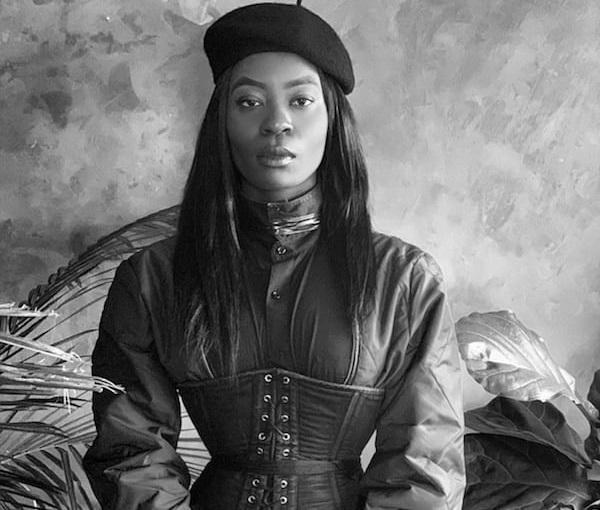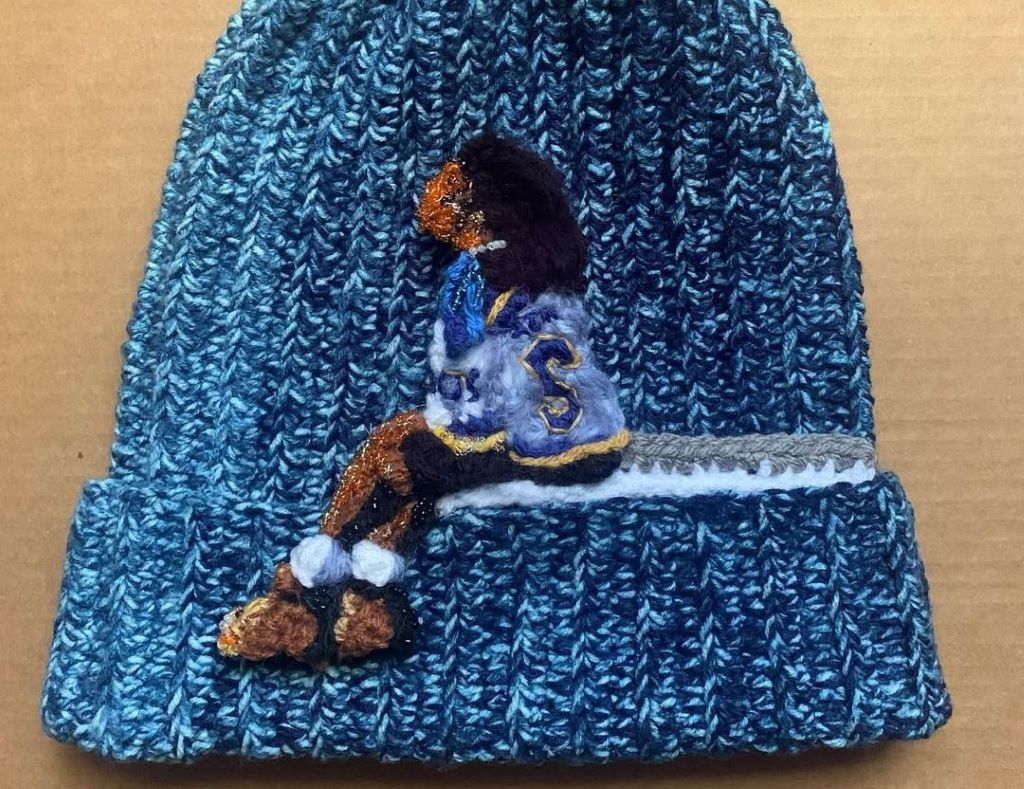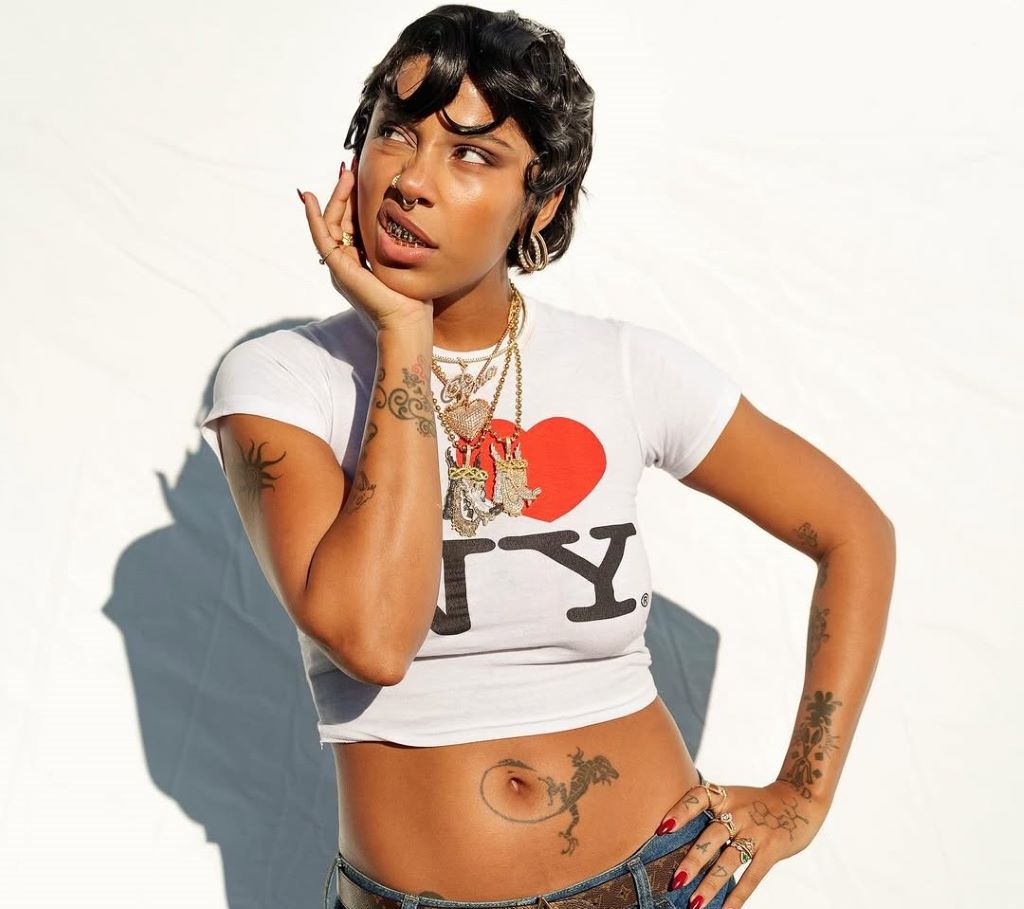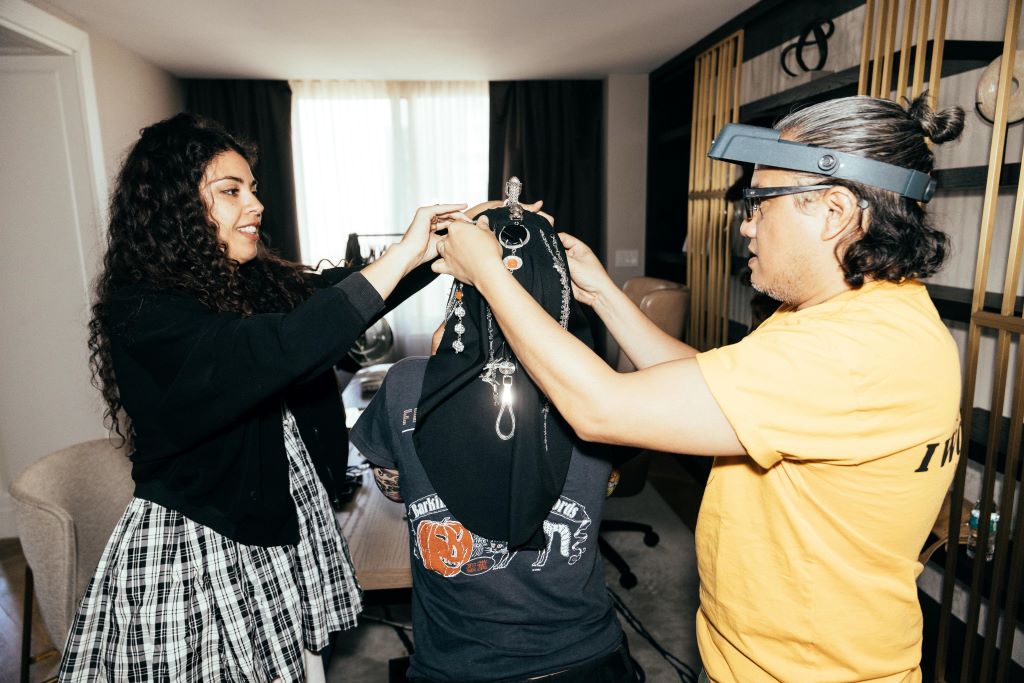In a single word, Brooklyn-born artist Joanne Petit-Frère‘s creative endeavors can be described as deep. Visually breath-taking, other-worldly and at times fleeting, Petit-Frère’s projects are at their root an examination of the ultra-complex intersection of adornment, human behavior and history as viewed through the black experience. Hair within her art functions much like the beat of drum, creating a literal thread in the form of a DNA-filled strand to our most ancient history.
Exhibited by top museums, universities and galleries, Petit-Frère’s hair art also exists as a living and breathing form as expressed through performers including Beyoncé, Solange Knowles and Janelle Monáe among others.
In the realm of film-making, Petit-Frère art directed the hair featured in “Hair Wolf,” a short film taking a humorously dark approach to examine the travails of a black salon located in a gentrifying Brooklyn,
We had an email exchange with Petit-Frere to learn about her path as an artist and what it’s like to work with hair as a fine art medium. Check it out below.
Snobette: Tell us about your background, where do you call home?
Joanne Petit-Frère: “I grew up in Brooklyn with a younger brother, the children of Haitian immigrant parents. I spent half of my childhood in Long Island and moved around through Queens and the Bronx after leaving dorm-life at the Fashion Institute of Technology.
“I was curious about the other coast and headed out West. First I settled in Los Angeles and then Portland. I lived in both states before returning back East and then enrolled at Kean University in New Jersy. I dropped out realizing how dear Brooklyn was to me and moved back home.”
Snobette: What was the path that led you to working with hair as a medium for your art? Do you work in other mediums?
Joanne Petit-Frère: “I created as a painter first, envisioning elaborate imagery on paper thru illustration. Then as stylist, I gathered garments from my own closet, some vintage and pieces from designer friends.
“My interest in hair as the primary medium of my practice was really an extension of my pursuit in fashion. I worked as a conservator of costume archives at the Costume Museum, a role that led me to experiment with collaging found materials into jewelry. The jewelry pieces then became sculptures. This was from 2007 to 2010. Then I transitioned from jewelry sculptures to creating hair sculptures.”
Snobette: Your work is very distinct. How does style and fashion impact your practice?
Joanne Petit-Frère: “Oh I’d say it’s an all encompassing feed of information. Fashion informs my practice while I also seek to disrupt the many ideologies it holds. This is where repurposing comes to play for me. Challenging the status quo of the couture world and its interpretation by the black mind and body. My experience working at the Costume Museum taught me that storytelling, fantasy and activism can all collide in the name of fashion. I find that healing.”
Snobett: You worked on hair for Janelle Monáe, Les Nubians, Solange and Beyoncé to name a few. When you work with a popular artist do you maintain full creative freedom or is the process more collaborative? Do you work with hairstylists or do you take on the project from start to finish?
Joanne Petit-Frère: “I’d say that it’s usually a fluid process because certain works that I’ve already crafted are requested more than others and serve as a head start for the direction of the vision. Most film and television productions are split into various locations. Sometimes I’m there from start to finish as I was for “Hair Wolf,” which I directed for entire length of the project.
“For Solange and the Evening Standard, I was on set for two days but the work was also utilized for a Glamour editorial, which I wasn’t in attendance for. This is where collaborations with hair stylists come to play, when they install an existing hair sculpture for the client.”
Snobette: You showed your work at the Armory Art Show for the first time this year and your work has been shown in various museums and galleries. What’s your relationship to the art world as a whole?
Joanne Petit-Frère: “Yes! I exhibited for the first time at the Armory this year with representation by Philip Martin Gallery. My relationship to the art world is still very intriguing. I find that persistence and hard work with business savvy helped me to attain financial stability, and allowed me to cope with the changes brought on by COVID-19. I’m able to channel feeling of fear into my work as a form of creative therapy.”
Snobette: What project can we look forward to in the coming months?
Joanne Petit-Frère: “I showed some work online at Frieze New York’s art fair this month since the fair was canceled. I’m working on a short film debuting Juneteenth with a grant by the Los Angeles Nomadic Division of Cultural Affairs, curated by Matthew Schumm. I’m also working on art zines to be released later this year.”






